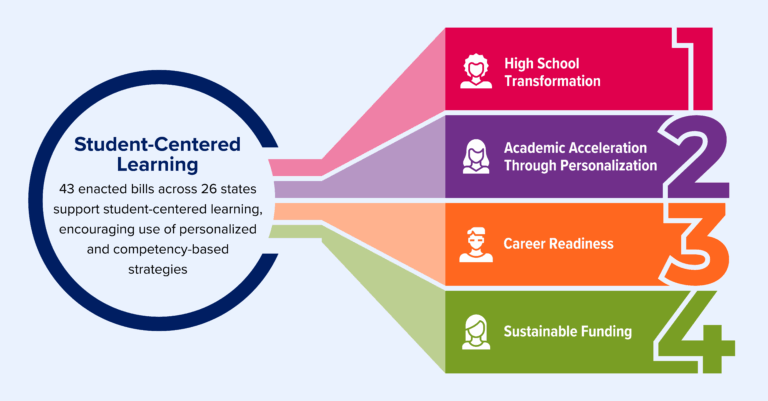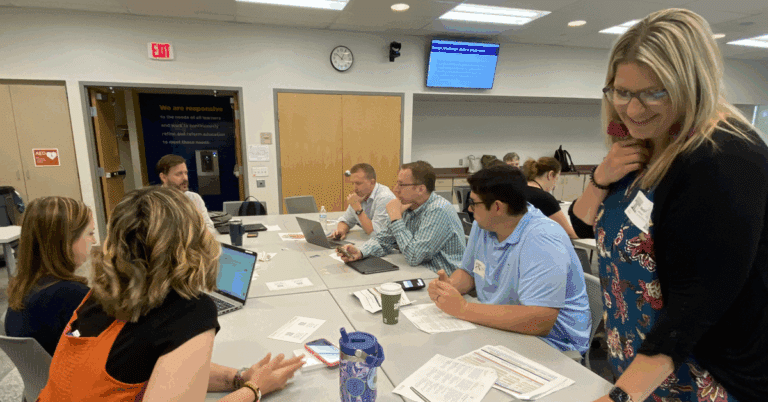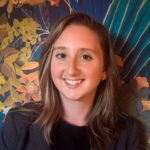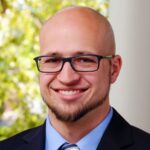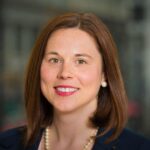As the four districts pioneering student-centered teaching and learning in North Dakota reach the end of their second year of work – a year with unexpected challenges beyond the already significant scope of system transformation – there’s a lot to celebrate.
Personalized learning is a cornerstone for distance learning.
For Oakes Public School District in Oakes, North Dakota, superintendent Kraig Steinhoff attests that “teamwork is our key to success,” highlighting the relationship-building that’s happening between districts as well as within his district.
“Family engagement, learner agency and developing our Portrait of a Graduate were our focus areas for the year,” Steinhoff explains, citing that the disruption of COVID-19 to the school year only further elevated the importance of these things. “Personalized, competency-based learning became the cornerstone for us when developing our distance learning plan. We’ll have a full-time personalized learning coach in the district next year and our distance learning platform provides us with a unique opportunity to involve all our staff as we plan for the future.”
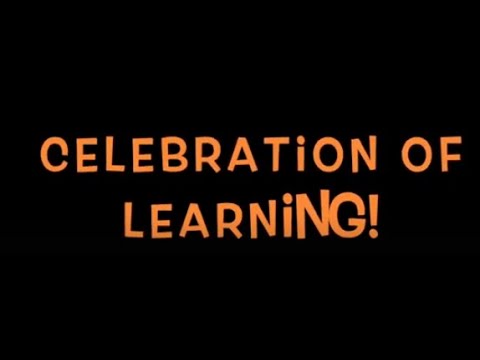
“Be nice to everyone, friends,” sang Oakes teacher Becca Roberts in a video to her students. “We’ll get through it together.”
Changing 100 years of tradition, one district at a time.
At Northern Cass School District in Hunter, North Dakota, the year began with a commitment to use standards-based grading, PreK-12.
“Parents were concerned that colleges wouldn’t accept our transcript and that their students wouldn’t be admitted, or wouldn’t be eligible for scholarships or particular programming,” said Steiner. In an effort to address parent and community concerns, Superintendent Corey Steiner and other members of his administrative team visited regional colleges and universities and engaged with legislators and the board of higher education. Letters were secured from universities and shared on the district’s website to help alleviate some of those fears.
“It’s difficult to change 100 years of tradition,” Steiner explains. “But if we told our educators today we’ll go back to percentage grades, they’d say absolutely not. We know what proficiency looks like now, and we’re doing a better job of ensuring kids get what they need.”
The senior capstone project in the district also became more aligned with personalized, competency-based learning and the district’s Portrait of a Graduate. Moving away from a showcase of a student’s work and more toward a demonstration of what they know and how they can define for themselves things like accountability and leadership, they became “very authentic, real and personal,” according to Tom Klapp, the district’s director of personalized learning.
“The senior capstone is the only opportunity that we’re really giving our kids to sit down and reflect on these skills,” says Klapp. “Now we need to think through how we embed this in our culture, our daily life, so these things are coming up all the time instead of just one time at the end of their school year.”
Identifying priorities for distance learning – and for the future.
Rethinking skills related to the district’s Portrait of a Graduate and providing seniors the opportunity to present and reflect has been part of West Fargo Public Schools’ work, as well.
“We’ve learned so much by listening to our students about what’s meaningful in our schools,” said Heather Sand, the district’s director of curriculum and instruction, of the senior presentations. “I was amazed by how many said that through these presentations, the school system was valuing them as a whole person and recognizing that being successful isn’t only about academics.”
Distance learning also meant the dispositions outlined in the district’s Portrait of a Graduate became more important than ever.
“If it wasn’t for this work, distance learning would’ve been very difficult,” said Beth Slette, district superintendent, of the district’s push towards personalized, competency-based learning and the relationship-building that’s so critical to doing it well. In addition to the dispositions playing a part in daily curriculum, the district also used them to rewrite job descriptions and screen applicants for positions beginning in the fall.
“With the pandemic and the move to distance learning, we really found out that our K-8 proficiency scales had even more meaning and gave us clarity on what we want students to know and be able to do,” said Sand of the district’s efforts to identify essential learnings and priority standards as they developed their distance learning plan. “We needed to figure out what was important and what we needed to focus on.”
For Slette, the partnership between her district and other districts involved in the cohort, as well as KnowledgeWorks and our partners, is key.
“I know that we are going first,” said Slette of the cohort’s work to scale personalized, competency-based learning. “It’s nice to go first with people that I really respect and admire. I appreciate this time together.”
Embracing a new normal for student-driven learning.
At the North Dakota Youth Correctional Center (YCC), face-to-face meetings with students are still a necessity and staff have seized the opportunity presented by the pandemic to approach teaching and learning differently.
“We wear masks all day to keep our kids safe,” said Michelle Pfaff, principal. Students have been separated into three different groups, each with dedicated teachers to minimize contact. “Throughout this time we’ve been looking for teachable moments and asking ourselves and our students, ‘What does self-direction look like?’”

SEL and an explicit focus on teaching life skills is a cornerstone of YCC’s approach.
Read More
Each group of students worked together to decide on a project to pursue, ranging from reading The Martian and building a model of the Mars rover to drafting a business plan and undertaking development of a portion of the school’s campus.
“The past seven weeks feel like six months,” said Pfaff. “But throughout all this uneasiness, we’ve found the epitome of personalized, competency-based learning. We’re not going to go back to our regular classroom instruction. We’re going to continue team teaching, working in large groups where students will be getting every single core area with electives put in. We’re excited to spend the summer in planning and launch what this new model will look like for us. We’re celebrating throughout this situation; there’s a definite silver lining.”
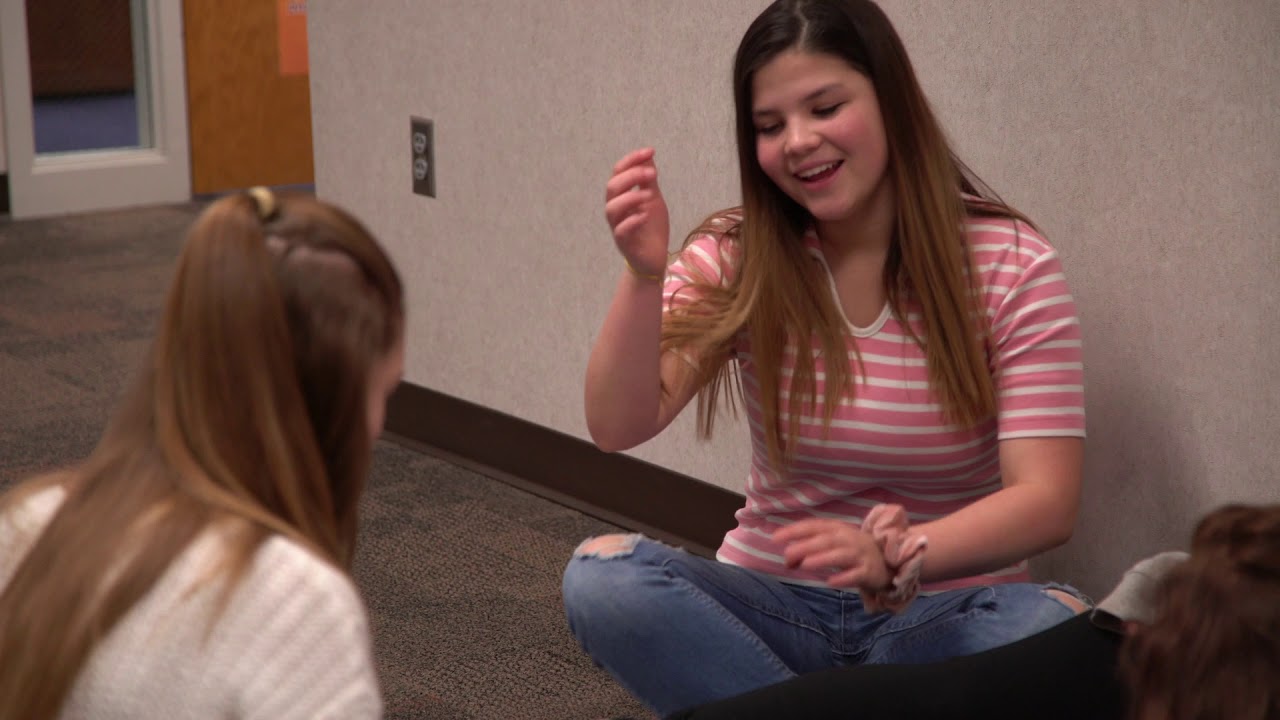
This was written by former Senior Manager of Communications Jillian Kuhlmann.
